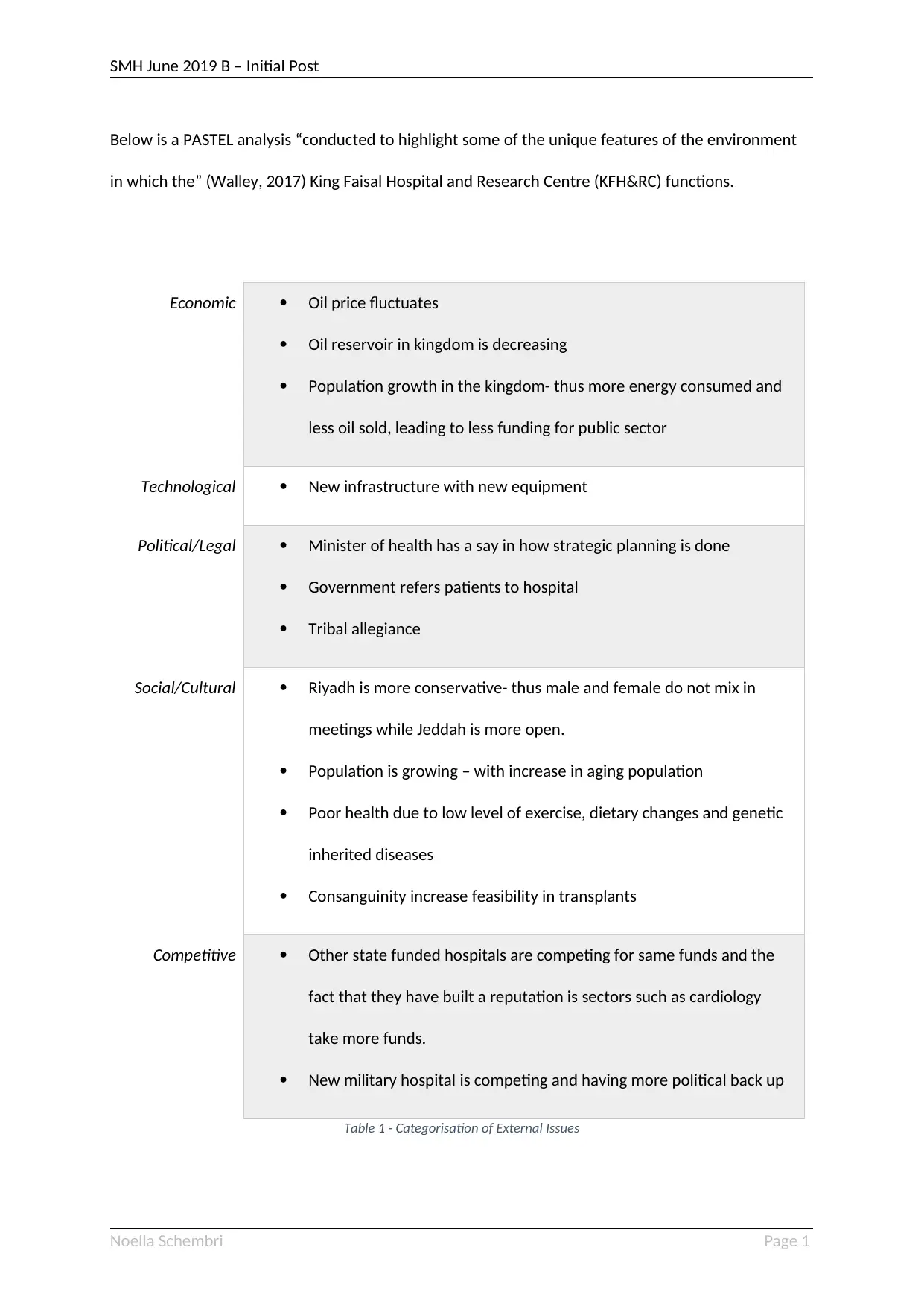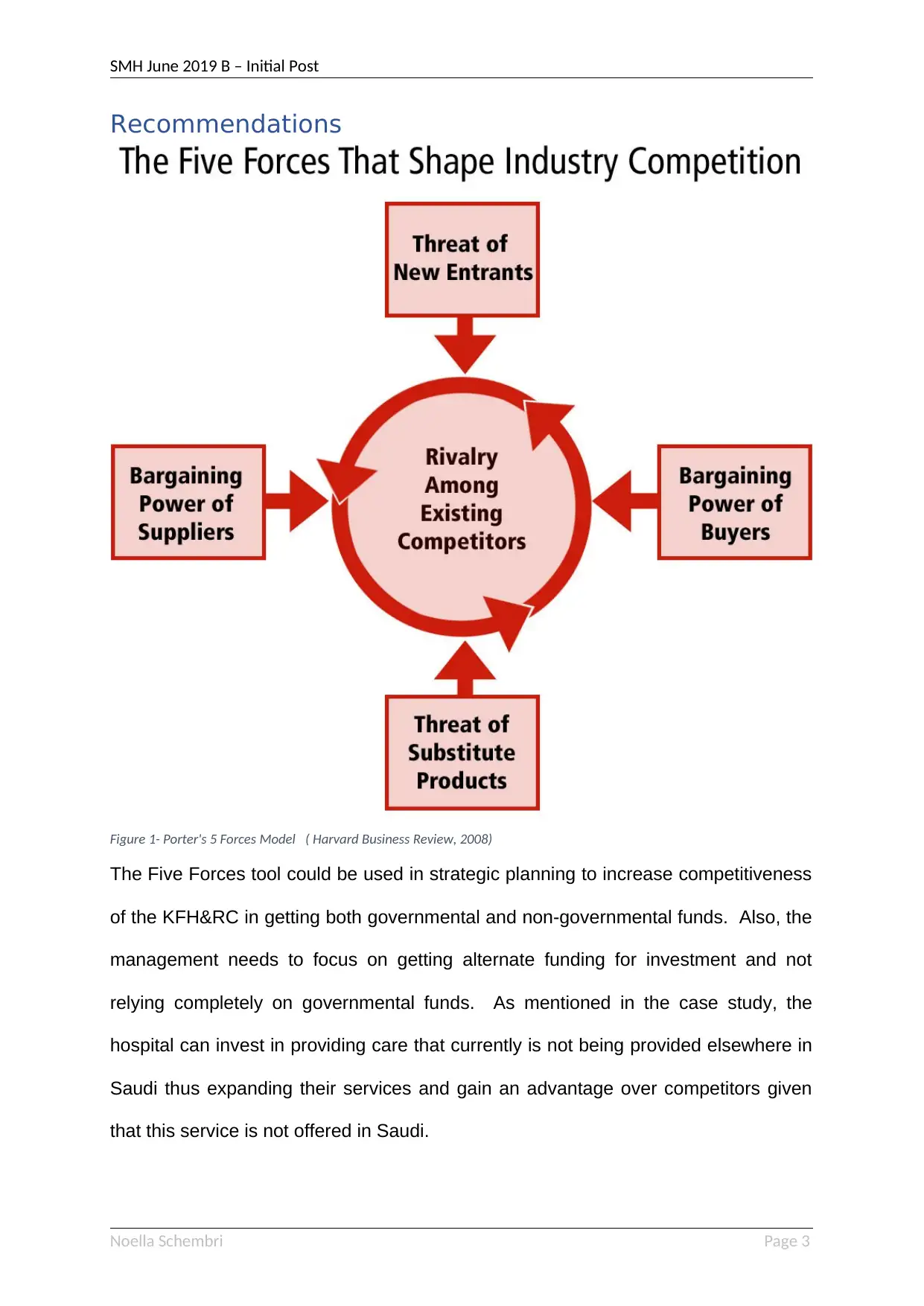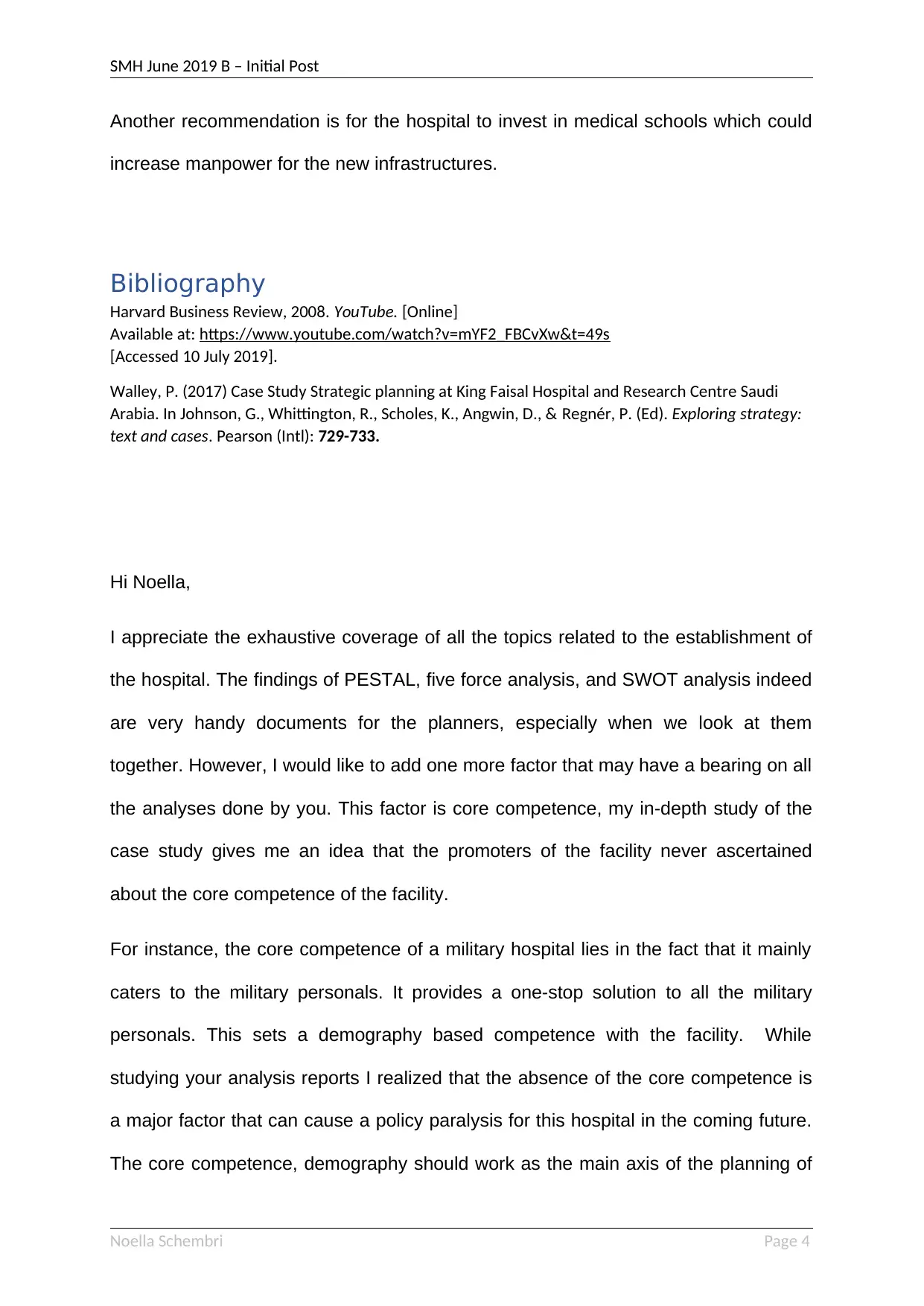SMH June 2019 B: Strategic Planning Analysis of King Faisal Hospital
VerifiedAdded on 2022/11/25
|5
|734
|493
Discussion Board Post
AI Summary
This discussion post analyzes the strategic planning process at King Faisal Hospital and Research Centre (KFSH) in Saudi Arabia. The analysis incorporates a PESTEL analysis to understand the external environment, identifying factors such as fluctuating oil prices, population growth, and political influences. It also utilizes Porter's Five Forces model to assess the competitive landscape. The post highlights the hospital's strengths in oncology, genetics, and transplants, while acknowledging weaknesses in areas like cardiology. Recommendations include focusing on core competencies, securing alternative funding, and expanding services. A core competence, demography should work as the main axis of the planning of the logistics of a medical facility and this element is missing from the case study. The discussion also touches on the importance of adapting to the changing environment and the need for strategic foresight to maintain a competitive edge, and also the lack of the core competence is a major factor that can cause a policy paralysis for this hospital in the coming future.
1 out of 5








![[object Object]](/_next/static/media/star-bottom.7253800d.svg)